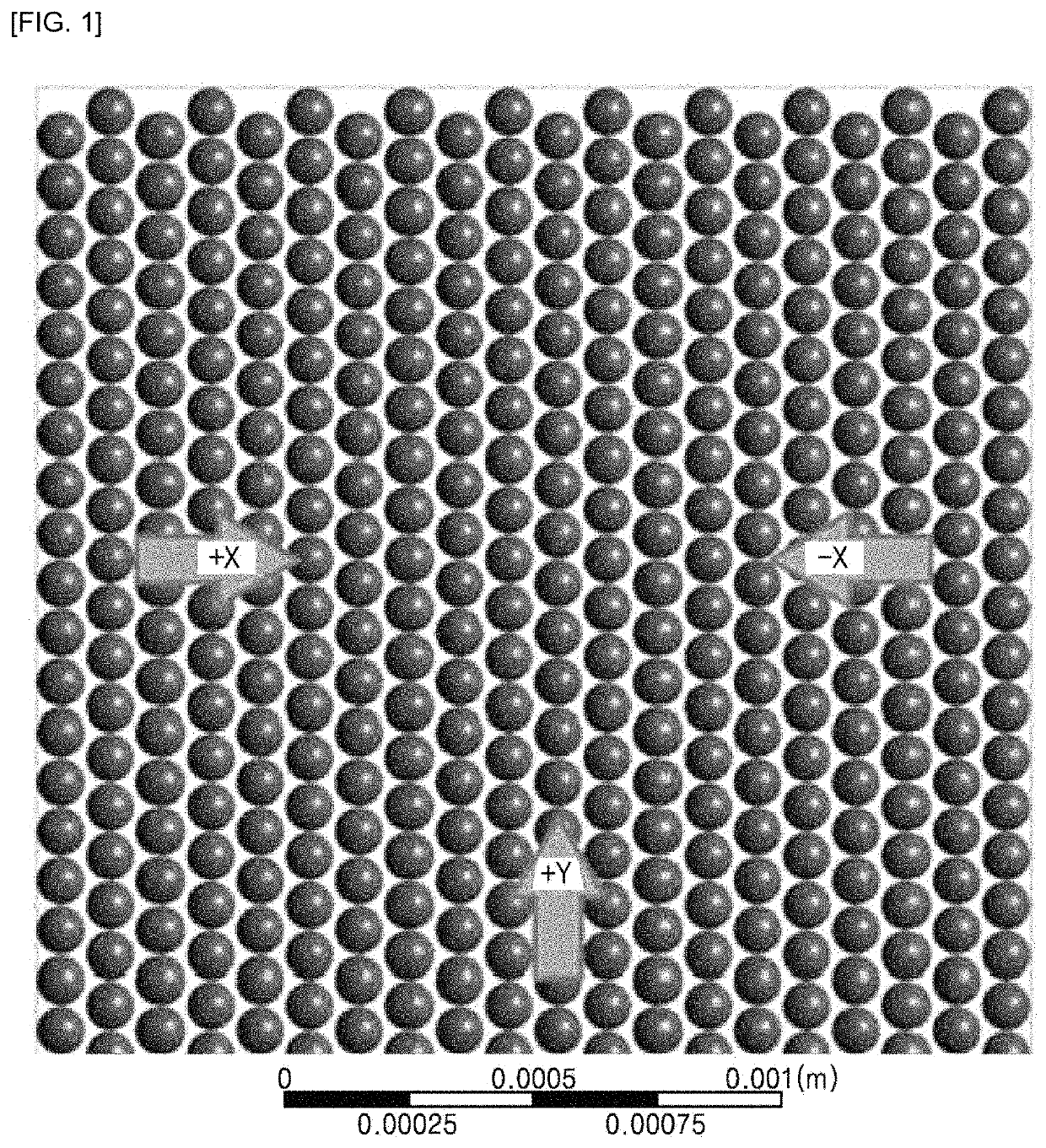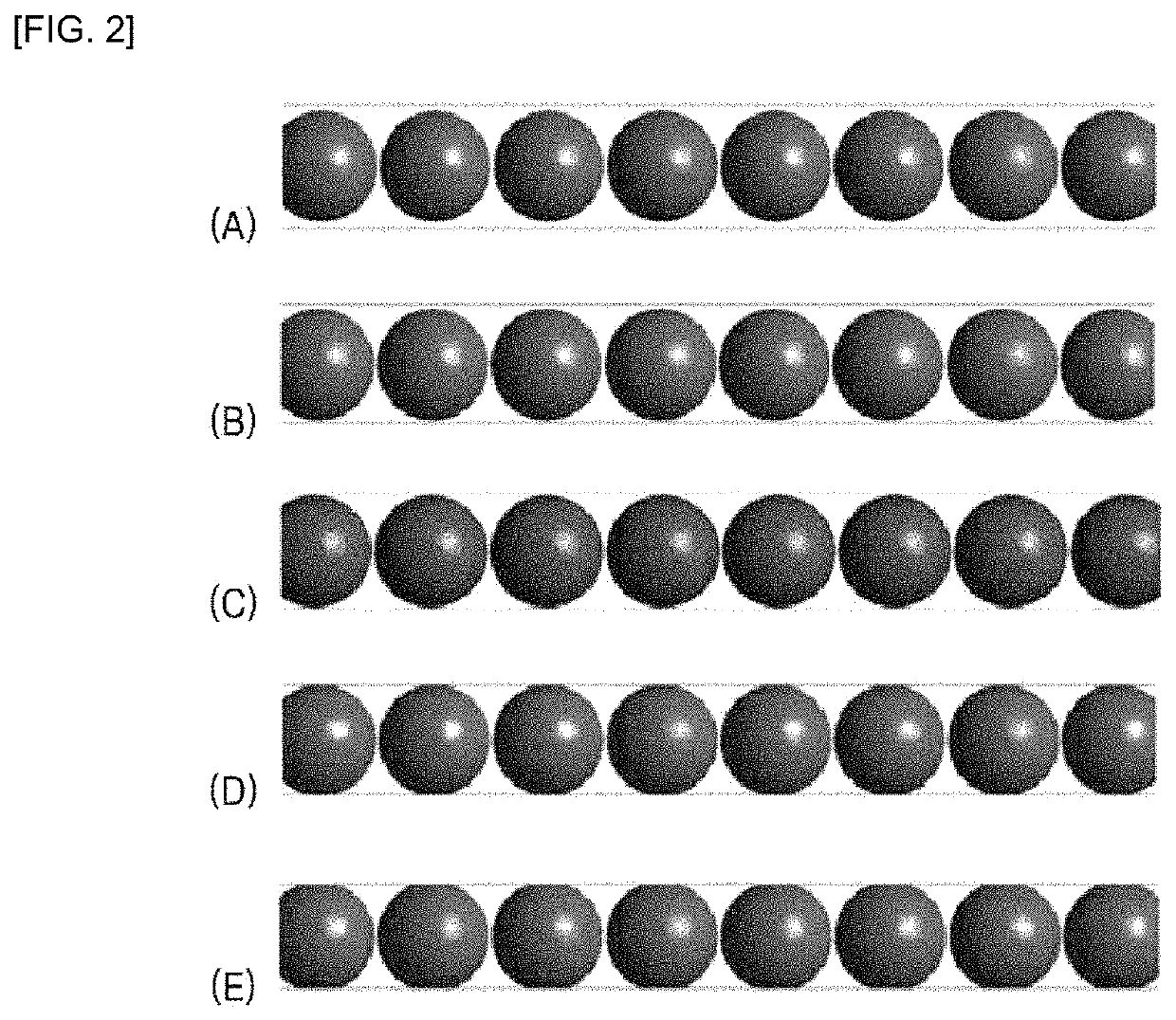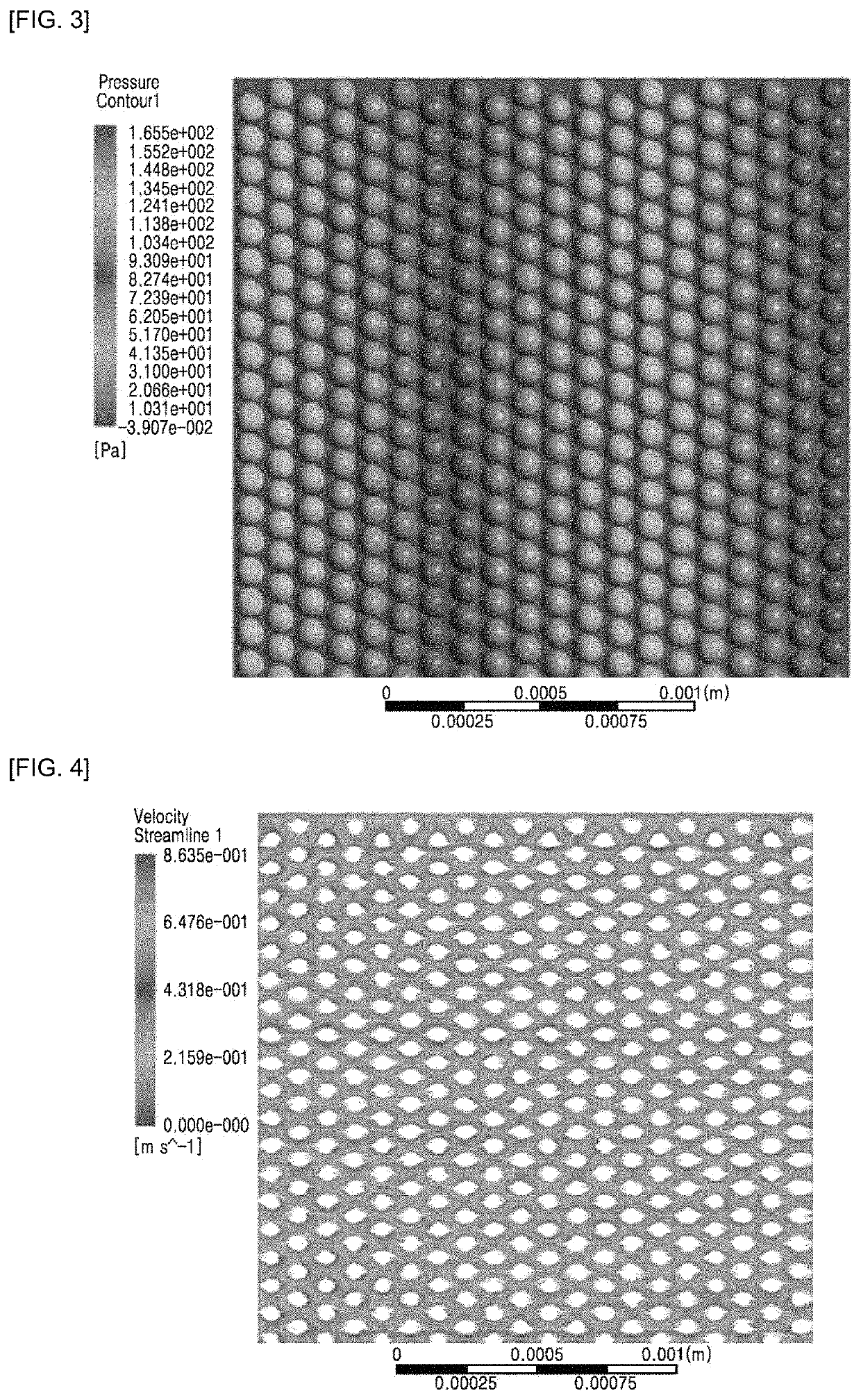Method for calculating tortuous hydraulic diameter of porous medium and method for analyzing flow in porous medium using same
a porous medium and hydraulic diameter technology, applied in the field of porous medium flow analysis, can solve the problems of complex representation value problems to be solved, cost and time consumption, etc., and achieve the effect of large average error rate, low average error rate and reliable estimation
- Summary
- Abstract
- Description
- Claims
- Application Information
AI Technical Summary
Benefits of technology
Problems solved by technology
Method used
Image
Examples
Embodiment Construction
Technical Problem
[0005]The present invention provides a method of calculating a tortuous hydraulic diameter of a porous medium for laminar flow and turbulent flow considering a geometric feature and a friction loss feature.
[0006]The present invention also provides a method of analyzing flow in a porous medium by using a method of calculating a tortuous hydraulic diameter of a porous medium for laminar flow and turbulent flow considering a geometric feature and a friction loss feature.
[0007]However, the scope of the present invention is not limited thereto.
Technical Solution
[0008]According to an aspect of the present invention, there is provided a method of calculating a tortuous hydraulic diameter of a porous medium, the method including providing porosity and a specific surface area of a porous medium, calculating a hydraulic diameter of the porous medium by using the porosity and the specific surface area, calculating tortuosity of the porous medium, and calculating a tortuous hyd...
PUM
| Property | Measurement | Unit |
|---|---|---|
| diameter | aaaaa | aaaaa |
| width×depth×height | aaaaa | aaaaa |
| porosity | aaaaa | aaaaa |
Abstract
Description
Claims
Application Information
 Login to View More
Login to View More - R&D
- Intellectual Property
- Life Sciences
- Materials
- Tech Scout
- Unparalleled Data Quality
- Higher Quality Content
- 60% Fewer Hallucinations
Browse by: Latest US Patents, China's latest patents, Technical Efficacy Thesaurus, Application Domain, Technology Topic, Popular Technical Reports.
© 2025 PatSnap. All rights reserved.Legal|Privacy policy|Modern Slavery Act Transparency Statement|Sitemap|About US| Contact US: help@patsnap.com



